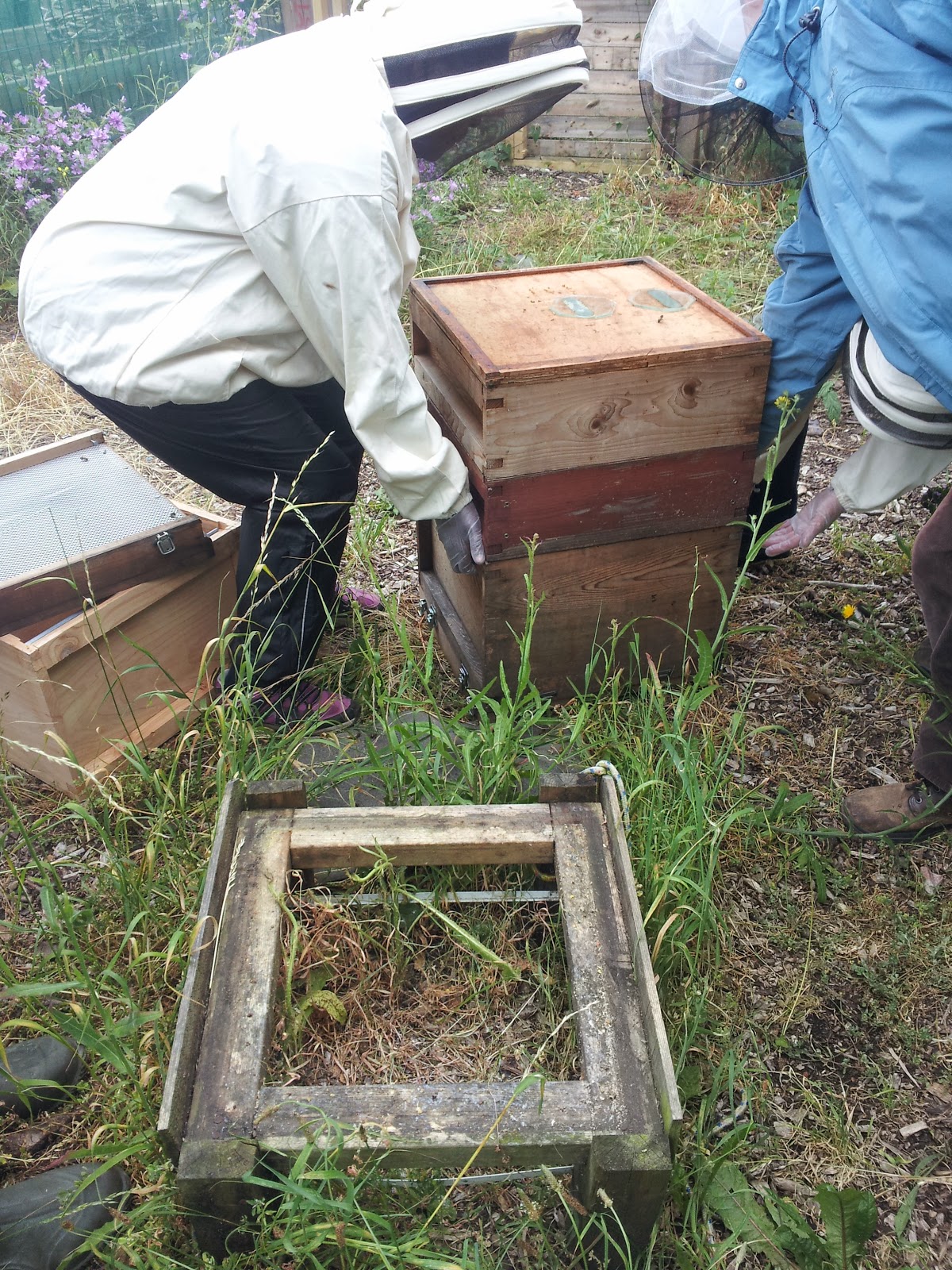Jenny would like to encourage the bees out of the broken wall of comb, so we will move the frames that surround it into a new box. We are all wearing the protective gear today as it could make the bees cross. First of all we lift the whole hive off its base:
Then we place the new floor on the base:
...and the new box on top:
Next, we carefully wiggle the top off the hive, smoking the bees through the gap:
we take the super off and you can see the broken wall of comb:
We transfer the frames one by one to the new box:
Till only the collapsed wall of comb is left in the old box. What a mess:
When we've filled the new box with the frames, we put the super on top. Lastly we put the box with the broken comb right at the top. The hive is looking very tall now!
The last, messiest bit was taking the old floor out sideways (the bit in the photo halfway up the hive with the metal clips and gap on the side), as bits of broken comb were falling out. No photo as we were all busy pushing the comb back in! We hope the bees will abandon the broken wall and move down to the new box. Wait and see.
Job done - that's Jenny's hive sorted. Here is the crack team changing gloves now to have a look at the Glengall colony (the new one we are trying to establish). We have to change gloves between handling hives to prevent the spread of any diseases (hopefully there aren't any - it's just a precaution).
With the Glengall colony, we did the same as last time: we moved a couple of frames upstairs, leaving them spaced far apart (which the bees don't like):
... and replaced them downstairs in the bottom box with a couple of top bars, to continue to encourage the bees to move off the frames and onto the top bars:
In time we should end up with only top bars left in the hive and be able to move the bees to the new hive you see in the picture you saw behind the team, which is designed for 'top bar beekeeping' (no frames).
We got to have a close look at some bees that were hanging around, probably disoriented for a bit by the move. The more squat ones with dark brown bottoms are drones and the stripy ones worker bees:
Jenny showed us this little device (which we didn't actually use): you put it on the floor of an upper box when you are ready to take the honey from it; the bees go down the round hole and push through the thin flexible strips of metal to get through to the lower box but can't get back up (except the very small or clever ones).
That's it. A busy day!













